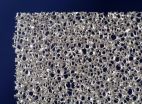(Press-News.org) To most air travelers, it is an annoying fact of life: the prohibition of liquids in carry-on luggage. Under aviation security regulations introduced in Europe in November 2006, passengers who wish to take liquids such as creams, toothpaste or sunscreen on board must do so in containers no larger than 100 ml (roughly 3.4 fluid oz.). The EU provisions came in response to attempted attacks by terrorist suspects using liquid explosives on trans-Atlantic flights in August 2006. Now, travelers have a reason to hope to see the prohibition lifted. On November 19, 2009, the EU Regulatory Committee of the Member States passed a proposal to this effect issued by the EU Commission. Under the terms of the proposal, the prohibition of liquids will be lifted in two phases. First, beginning April 20 9, 2011, passengers in transit will be permitted to take liquids along with them. Under the second phase, beginning April 20 9, 2013, the limit on quantities of liquids will be lifted altogether. The EU Commission intends to introduce legislation to this effect this August. In the future, security checkpoints will feature equipment that can reliably distinguish between liquid explosives and harmless substances such as cola, perfume or shampoo.
This is also the intention of the European Civil Aviation Conference (ECAC), which lays down standardized detection procedures and inspection routines for liquid explosives. The explosives tests are being carried out by the Fraunhofer Institute for Chemical Technology ICT in Pfinztal. The German Federal Ministry of the Interior has officially designated the institute as a German Testing Center. The researchers there are working in cooperation with the German Federal Police. »In our safety laboratory, we can carry out the experiments under all of the safety conditions we would find in the field,« remarks Dr. Dirk Röseling, a researcher at ICT. »Either on their own or at the invitation of ECAC, the manufacturers bring their detection equipment to our lab, where they show us how to operate it and then leave. Then we begin with testing.«
But how do these experiments work? In their partially remote-controlled experimental facilities, first researchers at the safety laboratories manufacture explosives according to specifications provided by the ECAC. Security services provide the organization with lists of substances to use in manufacturing explosives. Then, the detection equipment must automatically identify the liquid explosive – as well as any harmless substances – as such. For instance, the equipment must not identify shampoo as an explosive and set off a false alarm. Depending on the scenario involved, individualized testing methods and systems are required: If open containers need to be inspected, for example, then the sensors detect the vapors given off. If luggage screeners need to scan unopened bottles in a tub, on the other hand, then x-ray equipment is used. The experts forward the findings of their tests either directly to the manufacturers of the equipment, or to the German Federal Police, which in turn passes the results along to the ECAC. The ECAC, in turn, notifies the companies of whether or not their equipment is suitable for certification. »In the past, luggage screening has only identified metals and solid explosives. The screening equipment of the future will also identify liquid explosives. Initial tests at the Frankfurt Airport have already successfully been completed,« Röseling summarizes. The researcher and his team will present details of the test scenarios and methods at the Future Security conference in Berlin, September 7 to 9, 2010.
INFORMATION:
New luggage inspection methods identify liquid explosives
2010-09-22
ELSE PRESS RELEASES FROM THIS DATE:
Titanium foams replace injured bones
2010-09-22
The greater one's responsibilities, the more a person grows. The same principle applies to the human bone: The greater the forces it bears, the thicker the tissue it develops. Those parts of the human skeleton subject to lesser strains tend to have lesser bone density. The force of stress stimulates the growth of the matrix. Medical professionals will soon be able to utilize this effect more efficiently, so that implants bond to their patients' bones on more sustained and stable basis. To do so, however, the bone replacement must be shaped in a manner that fosters ingrowth ...
Young teens who play sports feel healthier and happier about life
2010-09-22
Taking part in sports is good all round for young teens: physically, socially, and mentally, according to a new study1 by Dr. Keith Zullig and Rebecca White from West Virginia University in the US. Their research shows that middle-school teenagers who are physically active and play on sports teams are more satisfied with their life and feel healthier. Zullig and White's paper is published online in Springer's journal Applied Research in Quality of Life.
Although the benefits of physical activity are well documented among teenagers, middle school children are an understudied ...
Taribavirin offers a safe, effective alternative for chronic hepatitis C
2010-09-22
Researchers at Cedars-Sinai Medical Center and 50 other centers found that weight-based dosing of taribavirin reduces rates of anemia while increasing sustained virologic response (SVR) in patients with chronic hepatitis C (HCV). Full details of this study are available in the October issue of Hepatology, a journal published by Wiley-Blackwell on behalf of the American Association for the Study of Liver Diseases (AASLD).
Chronic HCV is typically treated with ribavirin (RBV). When used in combination with peginterferon alfa (peg-IFN), RBV significantly enhances on-treatment ...
Breaking waves in the stellar lagoon
2010-09-22
The Advanced Camera for Surveys (ACS) on the NASA/ESA Hubble Space Telescope has captured a dramatic view of gas and dust sculpted by intense radiation from hot young stars deep in the heart of the Lagoon Nebula (Messier 8). This spectacular object is named after the wide, lagoon-shaped dust lane that crosses the glowing gas of the nebula.
This structure is prominent in wide-field images, but cannot be seen in this close-up. However the strange billowing shapes and sandy texture visible in this image make the Lagoon Nebula's watery name eerily appropriate from this viewpoint ...
Terlipressin treatment for gastrointestinal bleeding reduces serum sodium
2010-09-22
A new study published in the October issue of the journal Hepatology found that patients with severe portal-hypertensive bleeding who are treated with terlipressin may experience an acute reduction of sodium in their blood. This reduction in serum sodium, known as hyponatremia, can cause adverse reactions such as neurological complications, and is rapidly reversible upon terlipressin withdrawal. Researchers suggest that serum sodium should be closely monitored in these patients and caution that use of solutions with high sodium content to treat this condition may cause ...
Researchers crack cuckoo egg mystery
2010-09-22
Researchers at the University of Sheffield have discovered that cuckoo eggs are internally incubated by the female bird for up to 24 hours before birth, solving for the first time the mystery as to how a cuckoo chick is able to hatch in advance of a host's eggs and brutally evict them.
Published today (22 September 2010) in the journal Proceedings of the Royal Society of London, Series B, the research shows that internal incubation allows the cuckoo chick to hatch before its nest mates, evict them, and monopolise the food brought by the foster parents.
Although previous ...
Searching in the microbial world for efficient ways to produce biofuel
2010-09-22
With the help of genetic materials from a cow's rumen, U.S. Department of Agriculture (USDA) scientists are developing new ways to break down plant fibers for conversion into biofuel.
To convert corn stover and switchgrass into biofuel, the plant fibers must first be broken down into sugars. But cell wall polymers are cross-linked in various ways that make them very resistant to breaking down, according to Dominic Wong, a chemist at the USDA Agricultural Research Service (ARS) Western Regional Research Center, in Albany, Calif. ARS is the principal intramural scientific ...
UT researcher links maternal genes to selfish behavior
2010-09-22
If you are more inclined to love thyself than thy neighbor, it could be your mother's fault.
Those are the findings of Francisco Úbeda, assistant professor of ecology and evolutionary biology at the University of Tennessee, Knoxville.
Úbeda, along with fellow evolutionary biologist Andy Gardner from Oxford University, examined the impact that genomic imprinting has on the carrier's selfish or altruistic behavior. Genomic imprinting is the phenomenon in which the expression of a gene depends upon the parent who passed on the gene. Every person has a set of chromosomes ...
Building language skills more critical for boys than girls
2010-09-22
EAST LANSING, Mich. — Developing language skills appears to be more important for boys than girls in helping them to develop self-control and, ultimately, succeed in school, according to a study led by a Michigan State University researcher.
Thus, more emphasis should be placed on encouraging boy toddlers to "use their words" – instead of unruly behavior – to solve problems, said Claire Vallotton, MSU assistant professor of child development.
"It shouldn't be chalked off as boys being boys," Vallotton said. "They need extra attention from child-care providers and teachers ...
Mercury found to have comet-like appearance by satellites looking at sun
2010-09-22
INFORMATION:
Research in Boston University’s Center for Space Physics involves interdisciplinary projects between members of the Astronomy Department in the College of Arts and Sciences and faculty, staff and students in the College of Engineering. Research areas include observational and theoretical studies in atmospheric, ionospheric and magnetospheric physics, planetary and cometary atmospheres, solar and heliospheric physics, and space weather.
Founded in 1839, Boston University is an internationally recognized private research university with more than 30,000 ...




